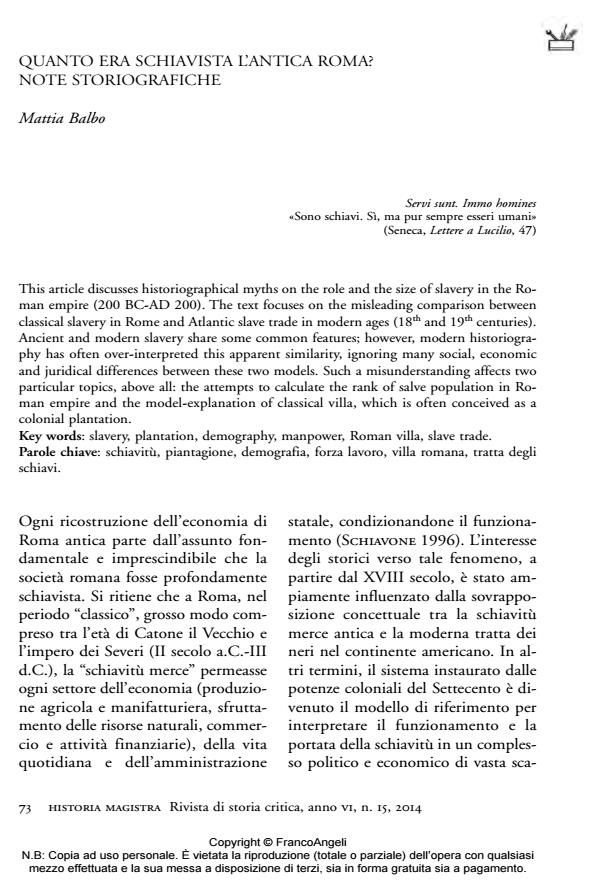Quanto era schiavista l’antica Roma? Note storiografiche
Titolo Rivista HISTORIA MAGISTRA
Autori/Curatori Mattia Balbo
Anno di pubblicazione 2015 Fascicolo 2014/15
Lingua Italiano Numero pagine 5 P. 73-77 Dimensione file 78 KB
DOI 10.3280/HM2014-015007
Il DOI è il codice a barre della proprietà intellettuale: per saperne di più
clicca qui
Qui sotto puoi vedere in anteprima la prima pagina di questo articolo.
Se questo articolo ti interessa, lo puoi acquistare (e scaricare in formato pdf) seguendo le facili indicazioni per acquistare il download credit. Acquista Download Credits per scaricare questo Articolo in formato PDF

FrancoAngeli è membro della Publishers International Linking Association, Inc (PILA)associazione indipendente e non profit per facilitare (attraverso i servizi tecnologici implementati da CrossRef.org) l’accesso degli studiosi ai contenuti digitali nelle pubblicazioni professionali e scientifiche
This article discusses historiographical myths on the role and the size of slavery in the Roman empire (200 BC-AD 200). The text focuses on the misleading comparison between classical slavery in Rome and Atlantic slave trade in modern ages (18th and 19th centuries). Ancient and modern slavery share some common features; however, modern historiography has often over-interpreted this apparent similarity, ignoring many social, economic and juridical differences between these two models. Such a misunderstanding affects two particular topics, above all: the attempts to calculate the rank of salve population in Roman empire and the model-explanation of classical villa, which is often conceived as a colonial plantation.
Parole chiave:Schiavitù, piantagione, demografia, forza lavoro, villa romana, tratta degli schiavi.
Mattia Balbo, Quanto era schiavista l’antica Roma? Note storiografiche in "HISTORIA MAGISTRA" 15/2014, pp 73-77, DOI: 10.3280/HM2014-015007